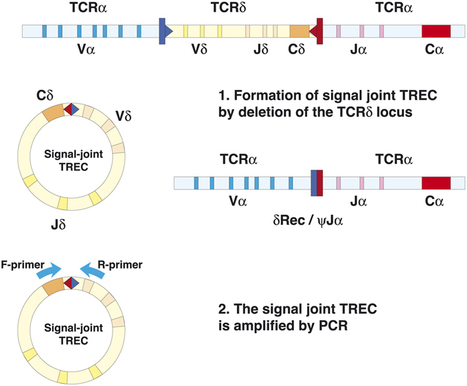Abstract Background: Fingolimod inhibits lymphocyte egress from lymphoid tissues, thus altering the composition of the peripheral lymphocyte pool of multiple sclerosis patients.
Objective: The objective of this paper is to evaluate whether fingolimod determines a decrease of newly produced T- and B-lymphocytes in the blood and a reduction in the T-cell receptor repertoire diversity that may affect immune surveillance.
Methods: Blood samples were obtained from multiple sclerosis patients before fingolimod therapy initiation and then after six and 12 months. Newly produced T and B lymphocytes were measured by quantifying T-cell receptor excision circles and K-deleting recombination excision circles by real-time PCR, while recent thymic emigrants, naive CD8+ lymphocytes, immature and naive B cells were determined by immune phenotyping. T-cell receptor repertoire was analyzed by complementarity determining region 3 spectratyping.
Results: Newly produced T and B lymphocytes were significantly reduced in peripheral blood of fingolimod-treated patients. The decrease was particularly evident in the T-cell compartment. T-cell repertoire restrictions, already present before therapy, significantly increased after 12 months of treatment.
Conclusions: These results do not have direct clinical implications but they may be useful for further understanding the mode of action of this immunotherapy for multiple sclerosis patients.
Via
Krishan Maggon



 Your new post is loading...
Your new post is loading...









Cytokine
Volume 73, Issue 2, June 2015, Pages 236–244
Review Article Seeking balance: Potentiation and inhibition of multiple sclerosis autoimmune responses by IL-6 and IL-10Sara J. Irelanda, 1, 3, , Nancy L. Monsona, 2, 3, , , Laurie S. Davisb, , 3, Show moreChoose an option to locate/access this article:Check if you have access through your login credentials or your institutionCheck access Purchase $35.95 doi:10.1016/j.cyto.2015.01.009